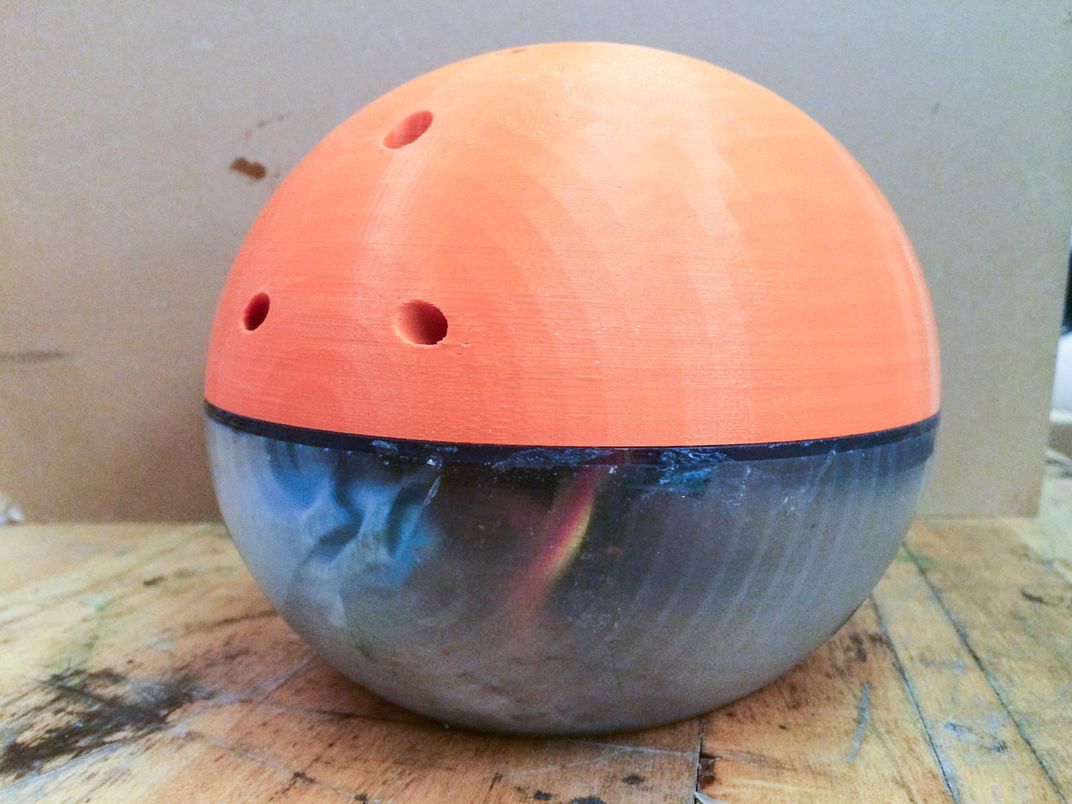This Stealthy Robot Could Boost Security at Our Ports
MIT researchers have developed a craft to spot pockets of contraband inside ships’ hulls
/https://tf-cmsv2-smithsonianmag-media.s3.amazonaws.com/filer/64/af/64af6684-b3b0-426d-a4e9-75e051521bc2/mit-underwater-robot-01-press.jpg)
Much attention is paid to the cargo passengers carry in and out of airports. Suitcases and trunks are tagged, x-rayed, even searched. Yet, the same level of scrutiny is not often applied to other means of travel.
“It’s really hard to maintain security at ports,” explains Sampriti Bhattacharyya, a mechanical engineering graduate student at the Massachusetts Institute of Technology. “How do you get on your hands and knees and check everything?” Inspectors would need to peer inside every cabin and cabinet and under floorboards to be sure there's nothing to hide.
In early September, she and her advisor, engineering professor Harry Asada, presented their solution at the International Conference of Intelligent Robots and Systems. Their Ellipsoidal Vehicle for Inspection and Exploration (EVIE, for short) is a football-sized robot that swims along ships’ hulls, using ultrasound to sniff out potential contraband.
Smugglers often conceal goods in secret compartments in ship hulls. Many of these crafts are small, and port security may not have the resources or time to search every one. Ultrasound will allow EVIE to spot hollow areas in a hull, where wares are likely to be stashed.
EVIE spans about eight inches across, and its plastic body is divided into two distinct hemispheres. The upper hemisphere contains a propulsion system of six water jets, which can push EVIE forward at about 2 miles per hour. The lower hemisphere is watertight and houses all the electronics, including a battery, motion sensors, central processor, wireless radio and a camera; the team flattened the bottom, so that EVIE could press flush against surfaces. For now, the robot is wirelessly remote controlled, but the researchers think it could one day be programmed to work autonomously.
Originally intended to assess the condition of water tanks in nuclear reactors, the team designed EVIE to peek into places that are either unsafe or inaccessible to humans. Its stealthy propulsion system, however, makes the remote-controlled robot ideal for surreptitious searches. Instead of propellers, which create a visible wake, the team opted for the six internal water jets. EVIE’s 3D-printed upper chamber fills with water, which the jets expel to propel and steer the craft. “You cannot see the jets in the water; you can hide it in a bunch of bushes [or seaweed] and let it go,” explains Bhattacharyya.

The control scheme is very sensitive, which is both a blessing and a curse. A high degree of maneuverability will allow pilots to skim as close to hulls as possible, but can also make it difficult to maintain a precise distance and a straight line. Before the team can make ultrasound work, they’ll have to improve its control mechanism and figure out how to navigate rough surfaces, such as hulls that are uneven or covered in barnacles. Ultrasound requires either direct contact with a surface or a consistent distance from it.
The team is currently conducting still-water tests to figure out how to help EVIE hover at a prescribed distance. Using a hydrodynamic buffer, or pre-determined fixed gap between the robot and boat, Bhattacharyya explains, could be a way for the device to quickly identify areas that require a closer look. “If the surface is rough, and I have a time crunch and want to scan really fast, I can stay at distance and then stop whenever I see something,” she says.
The prototype has already piqued the military's interest. “I am particularly interested to see if this type of technology could find use in domestic maritime operations, ranging from the detection of smuggled nuclear, biological, or chemical agents to drug interdiction, discovery of stress fractures in submerged structures and hulls, or even faster processing and routing of maritime traffic,” Nathan Betcher, a special-tactics officer in the U.S. Air Force, told MIT News.
The current device's lithium-ion battery can power the craft for about 40 minutes, enough time to screen several hulls. Bhattacharyya plans to increase battery life to 100 minutes with the next generation. She imagines a future where fleets of EVIEs monitor ports; they will rotate, with some reporting to scanning duty as others return to their charging stations. But, full-scale commercialization is still years away, says Bhattacharyya.
/https://tf-cmsv2-smithsonianmag-media.s3.amazonaws.com/accounts/headshot/me.jpg)
/https://tf-cmsv2-smithsonianmag-media.s3.amazonaws.com/accounts/headshot/me.jpg)